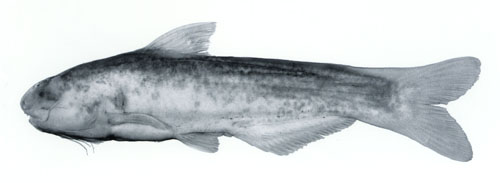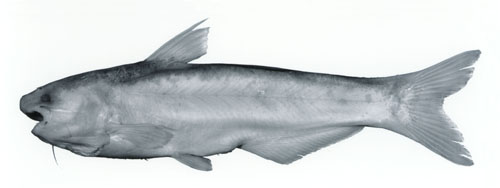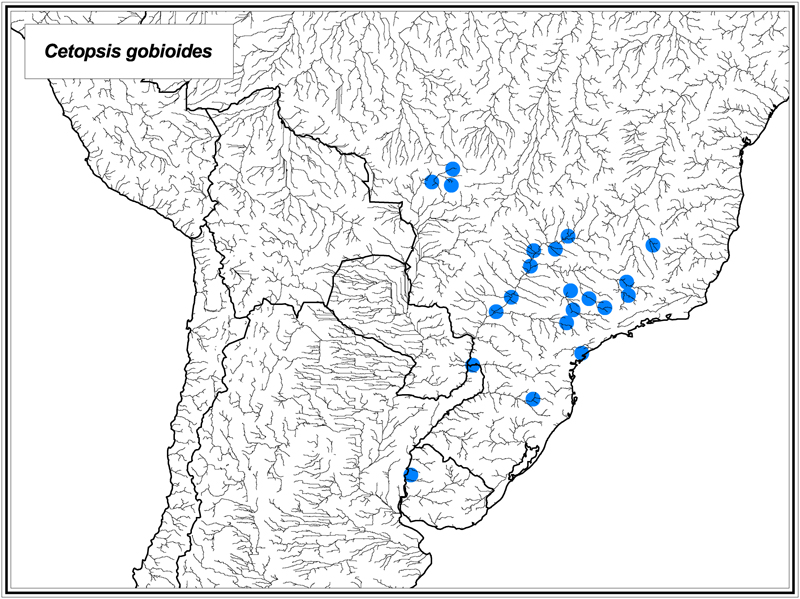

Reproduced from Vari, Ferraris and de Pinna (2005).
Cetopsis gobioides Kner, 1857
Identification: Cetopsis gobioides can be distinguished from all of its congeners by the combination of the presence of an eye, the conical teeth on the vomer and dentary, the rounded posterior nares which is distinctly separated from the contralateral nares by a distance greater than the width of the posterior nares, a mouth width which is approximately one-half of HL, the absence of a dark humeral spot, the absence of a posteriorly-rounded, variably-developed, bilobed patch of dark pigmentation at the base of the caudal fin, the absence of dark chromatophores on the anterior and lateral margins of the snout, the limitation of dark pigmentation on the dorsal fin to, at most, the basal regions of the middle portion of the fin in the form of spot with a semicircular margin, and the possession of 17 to 22 branched anal-fin rays, 22 to 27 total anal-fin rays, and 42 to 45 total vertebrae. Maximum size: 110 mm SL.
Range: Cetopsis gobioides is known from the upper portions of the Rio Sao Francisco basin in Brazil, and the Rio Parana and Rio Uruguay basins in Argentina, Brazil, Paraguay, and Uruguay, the upper Rio Paraguay in Brazil, and the coastal Rio Juquia of the state of Sao Paulo, Brazil.
Information from Vari, R. P., C. J. Ferraris Jr. & M. C. C. de Pinna. 2005. The Neotropical whale catfishes (Siluriformes: Cetopsidae: Cetopsinae), a revisionary study. Neotropical Ichthyology 3:127-238.
